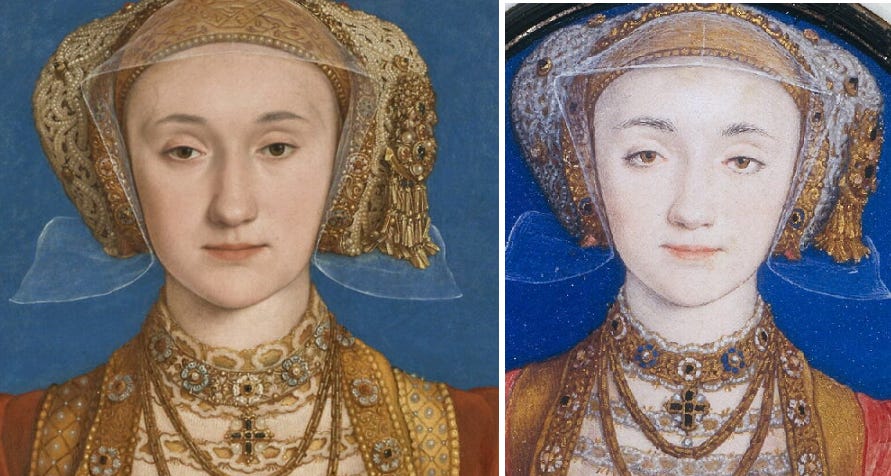Susanna Horenbout, the daughter of Gerard and sister of Lucas, was a painter, miniaturist, and manuscript illuminator active at the Tudor court. She has recently gained a face following the publication of my paper in the Royal Studies Journal, where I proposed that a sketch by Hans Holbein, labelled “Lady Parker”, is in fact a portrait of Susanna herself.
Until recently scholars did not know of any surviving works by Susanna. Most of the miniatures the Horenbout workshop produced were later attributed to Lucas, resulting in the seeming dearth of works by Susanna. Lucas served as royal painter from 1525 to his death in 1544, producing miniatures of the royal family and various courtiers, whereas the existing household accounts do not name Susanna as a painter. We do know, however, that contemporaries such as Albrecht Dürer and Lodovico Guicciardini praised Susanna’s painting skills, so she must have been active as a paintress and miniaturist.
Recently a team of researchers led by Emma Rutherford has attributed to Susanna a miniature painted c. 1546. The miniature was formerly labelled as Katherine Parr, Henry VIII’s sixth wife, but the sitter bears no resemblance to Katherine’s known portraits. The sitter from the miniature is now identified as Lady Mary, Henry VIII’s eldest daughter, and believed to date to c. 1546. Gerard and Lucas Horenbout were dead by this date, which strengthens the case for its authorship by Susanna.
Anne of Cleves - Susanna Horenbout’s miniature?
There might be one more work by Susanna that has been hitherto attributed to someone else. The Victoria & Albert Museum in London preserves a miniature of Henry VIII’s fourth wife, Anne of Cleves, set in a turned ivory box with a lid carved to resemble a rose. Curators in the V&A believe that the ivory box container “probably dates” from the late sixteenth century. They note that such skilled turning of ivory was unknown in sixteenth-century England but was common in Germany. At the time, collections of masterfully crafted ivory pieces were being assembled in Dresden and Munich.
Henry VIII sent Susanna to Germany in October 1539 to join Anne of Cleves’s household. Therefore it is not impossible that Susanna painted that miniature of Anne and ordered the ivory case from a German workshop. The miniature is traditionally attributed to Hans Holbein, but this depiction of Anne of Cleves differs considerably from Holbein’s portrait of Anne on display at the Louvre.

The Louvre painting portrays Anne’s eyes, nose and mouth with perceivable differences. This allows the possibility that Hans Holbein, who always painted a particular sitter with the same features, did not paint the Louvre artwork. The artist who painted the V&A miniature modelled it on Holbein’s portrait of Anne of Cleves, as is evident from her clothing, which is the same in both works. One could argue that the miniature was either created by one of the Horenbouts, or in the workshop of Hans Holbein by one of his apprentices.
If you enjoyed this post, you may also enjoy my newest book entitled “Secrets of the Tudor Portraits” - out now!







Really enjoying your posts; such interesting information!
Thank you for all the great information Sylvia.